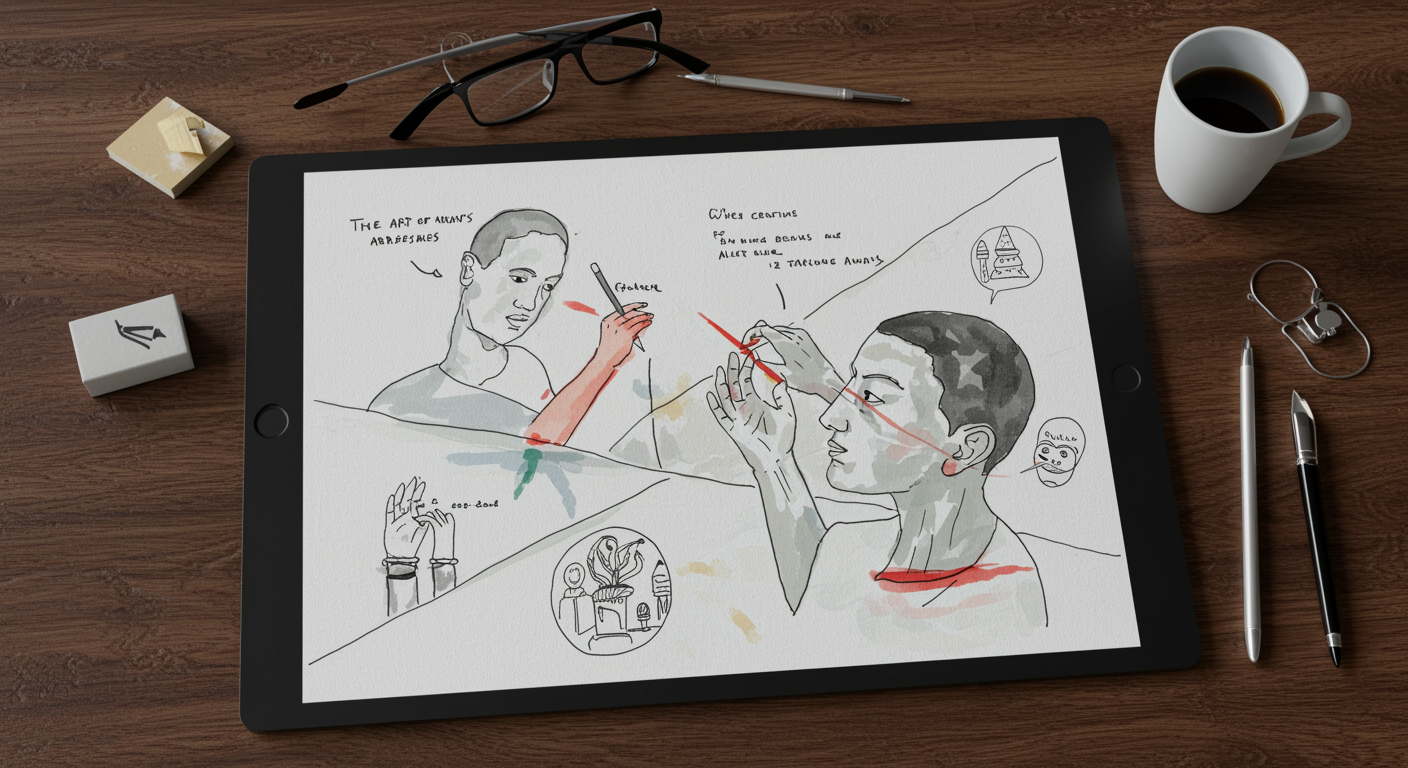
We often associate the act of creation with adding. Think of a painter layering colors onto a canvas, a writer piecing together words, or an architect stacking bricks to form a structure. Our minds instinctively lean towards accumulation when envisioning how something new comes into being. But what if the profound beginning of a creative endeavor, particularly in art, isn’t about contributing, but about subtracting?
Consider a process where the very first step involves removing. Imagine starting with an abundance, a solid block of raw material, and then systematically taking away everything that isn’t essential to the final vision. This counter-intuitive approach isn’t just a philosophical musing; it’s a foundational principle in many forms of artistic expression, shaping masterpieces across centuries and disciplines. It’s known as subtractive art, and its power lies in its ability to reveal rather than construct.
The most intuitive and perhaps oldest example of subtractive art manifests in sculpture. For millennia, artists have confronted raw masses of stone, wood, or even ice, with the goal of releasing the form hidden within. Michelangelo Buonarroti famously captured this essence, stating, “I saw the angel in the marble and carved until I set him free.” This isn’t merely poetic license; it articulates a fundamental truth of carving. The artist doesn’t add form; they uncover it. Every chisel strike, every rasping sweep, removes the superfluous, bringing the latent image closer to reality.
The discipline required for such an endeavor is immense. Unlike additive processes, where errors can often be built over or disguised, a misplaced cut in stone can be irreversible, irrevocably altering the piece’s integrity or requiring a radical change in concept. This demands a profound understanding of the material, meticulous planning, and an almost prescient vision of the finished work within the unworked block. Think of the intricate details in a classical marble statue, where drapery seems to flow and muscles ripple, all conjured from solid rock through careful, considered removal.
While carving is the quintessential subtractive method in three dimensions, the principle extends surprisingly into two-dimensional mediums like painting and drawing. One might initially think these are purely additive, but artists frequently employ subtractive techniques. Consider the act of erasing in a charcoal drawing, not just to correct a mistake, but to lift pigment and create highlights or atmospheric effects. This selective removal of material can define edges, soften transitions, or even establish light sources.
A more deliberate subtractive technique in painting is sgraffito, derived from the Italian word “to scratch.” In this method, an artist applies a layer of paint (often darker) over another (lighter), and then scratches through the top layer to reveal the color beneath. This creates crisp lines, textures, or patterns that would be difficult to achieve with brushwork alone. Similarly, some watercolor artists use blotting, sponging, or scraping to lift pigment from damp paper, creating delicate textures or the illusion of light hitting water or foliage. This strategic removal of existing color introduces depth and luminosity, demonstrating how creativity can flourish through taking away.
Beyond traditional mediums, the philosophy of subtraction resonates in contemporary and digital art practices. Digital sculptors might start with a large, undifferentiated mass and use virtual chisels to refine their forms. Graphic designers often simplify complex layouts, removing elements to enhance clarity and impact. In photography, the concept of cropping a frame to exclude distractions and focus the viewer’s eye is a powerful subtractive act, eliminating visual noise to amplify the subject. Even in abstract art, the arrangement of negative space – the area around and between subjects – often becomes as critical as the positive forms, defined by what is not there.
This pervasive presence of subtractive methods suggests something profound about the creative process itself. It implies that sometimes, the true essence of an idea or a form is not something that needs to be built from scratch, but something that needs to be uncovered, stripped of its obscuring layers. It’s a journey of refinement, a quest for purity and clarity that transcends the medium. This approach fosters a mindset of problem-solving through simplification, where the challenge lies not in what to add, but in what to eliminate to bring forth the clearest expression.
Ultimately, the lesson from subtractive art is one of distillation. It teaches us that creation isn’t solely about expansion; it’s also about focus, about finding the core truth by discarding the peripheral. Whether an artist is revealing an angel from marble, scratching light into a painting, or simply removing clutter from a composition, the act of taking away becomes a powerful gesture of affirmation. It is a testament to the idea that sometimes, the most impactful way to make something truly shine is to let go of everything that isn’t it.